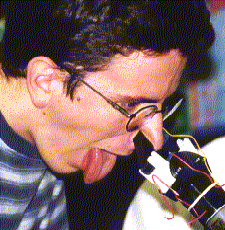

EE 455 AI: NEURAL NETWORKS I (4) - Introduces approach for developing computing devices whose design is based on models taken from neurobiology and on notion of ``learning.'' A variety of NN architectures and associated computational algorithms for accomplishing the learning are studied. Experiments with various of the available architectures are performed via a simulation package. Students do a major project on the simulator, or a special programming project. Prerequisites: senior standing in EE/CPE or CS, or graduate standing.
EE 456 AI: NEURAL NETWORKS II (4) - Focuses on applications. Topics in fuzzy set theory, control theory, and pattern recognition are studied and incorporated in considering neural networks. A design project (using NN simulator) in selected application area is done by each student. Prerequisite: EE 455/555.
EE 478: INTELLIGENT ROBOTICS I (4) - Basic problems of intelligent robotics. Computers for logic and logic programming. Hardware for artificial intelligence. Formulation and reduction of problems. Tree-search methods and architectures. Predicate calculus and resolution method. Methods of formulating and solving problems in logic programming. Unification in hardware. Fuzzy logic and fuzzy logic machines. Machines for logic programming and artificial intelligence. Reasoning by analogy and induction: application of associative processors. Prerequisite: EE 485/585 or 425/525.
EE 479 INTELLIGENT ROBOTICS II (4) - Sensors. Computer vision hardware. Problems in image processing, vision, manipulation, and planning. Machines for image processing and computer vision. Morphological processors. Manufacturing inspection. Non-numeric computers. Path planning. Localization. Use of reasoning and learning. Applications in scheduling, planning, and assignment. Computer architectures for robotics. Integrated robotic systems for manufacturing. Architectures of comprehensive mobile robots. Robots in health care. System integration. Examples of application. Prerequisite: EE 478/578.
EE 559/659 GENETIC ALGORITHMS (4) - Theory and applications of genetic algorithms. Study of the Schema and No Free Lunch theorems. Techniques for using genetic algorithms to solve multi-objective and NP-hard optimization problems from physical science, natural science, engineering and mathematical fields. Investigation of game theory problems, co-evolution problems, and constrained parameter optimization problems. Introduction to classifier systems. Survey of current technical literature in evolutionary computation. Prerequisite: CS 163.
EE 568/668 INTRODUCTORY IMAGE PROCESSING (4) - Two-dimensional systems, image perception, image digitization (sampling and quantization), image transforms (Fourier, Cosine, K-L transforms), image enhancement (histogram equalization, filtering, spatial operation). Prerequisite: graduate standing.
EE 569/669 ADVANCED IMAGE PROCESSING (4) - Introduction to random fields, image representation by stochastic models, image restoration (Wiener and Kalman filtering), image coding and compression predictive and transform coding, vector quantization). Prerequisites: EE 565/665, 568/668.
EE 570/670 COMPUTER VISION (4) - Image detection and registration, image analysis (texture extraction, edge detection, segmentation), image reconstruction (radon transform, Fourier reconstruction), stereo imaging and motion analysis, pattern recognition (recognition, classification and clustering). Prerequisite: EE 568/668.